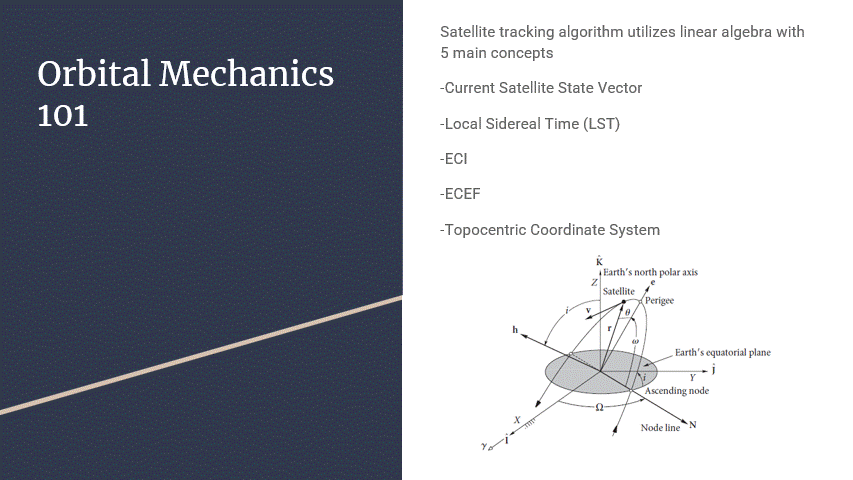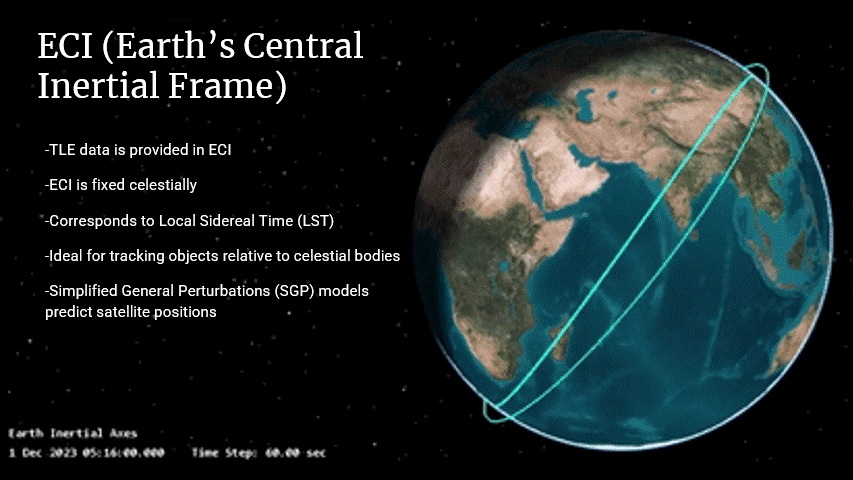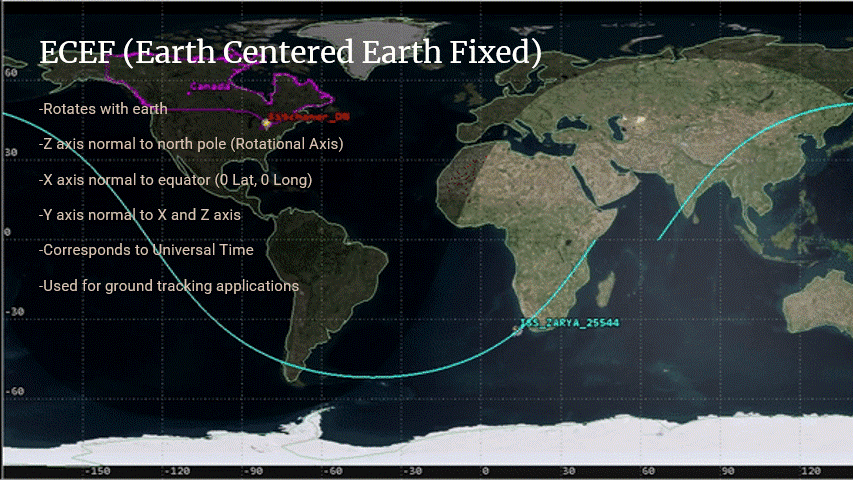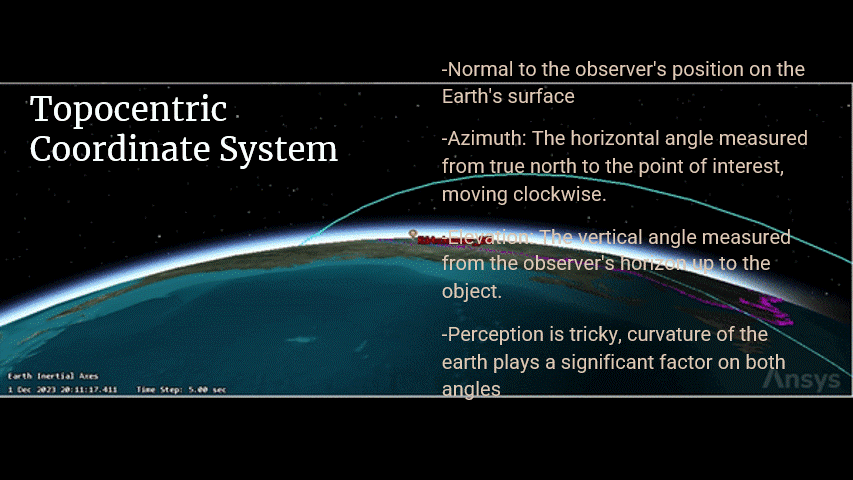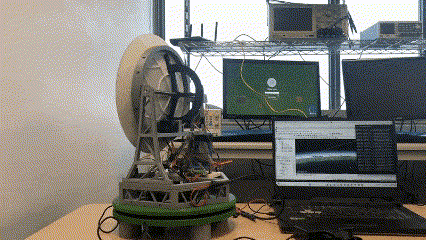This three week class project utilized a school-provided antenna platform equipped with x and y-axis stepper motor assemblies, controlled by a Raspberry Pi serving as the supervisory controller. The main objective was to develop and implement the control software necessary to precisely point the antenna at an orbiting satellite, effectively functioning as a working ground station.
I volunteered to attempt to write my own satellite tracking algorithm, which required me to study a few online orbital mechanics classes and textbooks. The technical accomplishments of this project are as follows:
Satellite Tracking Algorithm: Developed a Python-based algorithm that tracks satellites in a topocentric reference frame using the ground station’s latitude and longitude.
Data Retrieval: Utilized Python to retrieve satellite data from Two Line Element (TLE) APIs.
Orbital Mechanics: Studied relevant sections of 'Orbital Mechanics for Engineering Students' by Howard Curtis to understand how to extract and process TLE data.
Algorithm Conversion: Converted MATLAB algorithms from the textbook into functional Python code to perform necessary matrix transformations on position vectors.
High Accuracy: Achieved 99% accuracy for the tracking algorithm from a topocentric reference frame.
Project Presentation
(Click Play and Follow Along With The Presentation Slides Below)

Presentation Gallery
